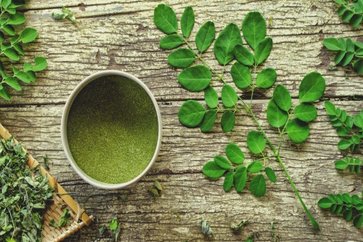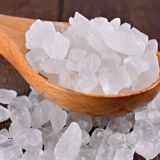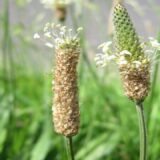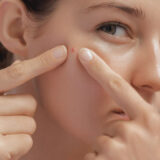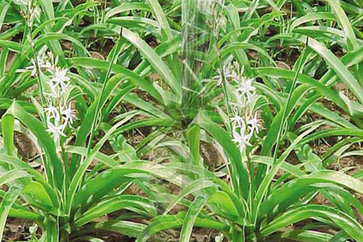Ayurvedic Remedies to Treat Leucoderma & White Skin Patches
Leucoderma is a disease in which white blotches on the skin appear due to the loss of melanin, the pigment that determines the color of skin, hair, and eyes. Leucoderma is also known as white spots in the simple term it can be defined as the delimited loss of pigmentation on the skin.
The known as leucoderma is often harmless to the patient and causes no physical problem, but creates a major problem in society as many misinterpret it as leprosy and maintain distance from such a patient.
Although the exact cause is unknown, heredity and a disturbed immune system are thought to be important factors contributing to this condition, known as leucoderma. Vitiligo / Leucoderma is more of a cosmetic condition of the disease.
What is Leucoderma in Ayurveda?
In Ayurveda, leucoderma, commonly referred to as “Shwitra” or “Kilaas” (धवल रोग / श्वेत कुष्ठ), is understood as a non-contagious skin condition characterized by white patches due to a loss of pigmentation. Ancient Ayurvedic texts emphasize that this condition does not lead to other skin diseases or symptoms, distinguishing it from more severe skin disorders.
Leucoderma is classified as a type of harmless Kushtha (skin disorder). According to Ayurvedic principles, the condition is linked to an imbalance in Pitta dosha, which governs metabolism, heat, and transformation within the body. When Pitta is poorly produced or becomes imbalanced, it can result in the manifestation of white patches on the skin.
In some cases, the affected areas may become red, itchy, or even develop a burning sensation. These symptoms can indicate a more complex interaction with the body’s systems. Ayurveda posits that leucoderma often stems from a disorder within the digestive system, with poor digestion contributing significantly to the condition.
Individuals experiencing digestive issues, such as dysentery or irregularities in Agni (digestive fire), are at a higher risk of developing leucoderma. This connection underscores the importance of digestive health in managing the condition and preventing its progression.
As a result, Ayurvedic treatment for leucoderma typically begins with addressing underlying digestive problems. Herbal remedies like Kutaja (Holarrhena antidysenterica) are often recommended to help restore digestive balance and alleviate symptoms.
By focusing on improving digestion and balancing Pitta, Ayurveda aims to promote healing and restore skin health effectively. This holistic approach not only addresses the skin condition but also enhances overall well-being.
Diet For Leucoderma Patient
Leucoderma, also known as vitiligo, is a skin condition characterized by the loss of pigmentation. A balanced diet can play a crucial role in managing the condition and supporting overall skin health. Here are some dietary guidelines for leucoderma patients:
Foods to Include
Vegetables:
- Tomatoes: Rich in antioxidants like lycopene, tomatoes help protect the skin from damage. They are also high in vitamin C, which aids in collagen production, promoting skin elasticity and health.
- Spinach: This leafy green is packed with vitamins A, C, and K, as well as iron and calcium, which contribute to skin health and overall vitality. Its antioxidant properties help combat oxidative stress that can affect skin pigmentation.
- Broccoli: A powerhouse of nutrients, broccoli contains sulforaphane, which may help protect the skin from UV damage. Its high fiber content also supports digestion, aiding nutrient absorption.
- Cabbage: Cabbage is rich in vitamins C and K and has anti-inflammatory properties. It can help detoxify the body, which is essential for skin recovery.
Fruits:
- Apples: High in quercetin and vitamin C, apples support the immune system and promote skin health. They also contain fiber, which aids in digestion and detoxification.
- Blueberries: These berries are loaded with antioxidants that help reduce inflammation and oxidative stress. They also support overall cellular health, which is vital for skin regeneration.
Whole Grains:
- Oats: Oats are a great source of soluble fiber, which supports gut health and helps regulate blood sugar levels. They also provide essential nutrients like magnesium and zinc, which are important for skin repair and function.
Nuts and Seeds:
- Nuts: Almonds, walnuts, and Brazil nuts are rich in healthy fats, protein, and vitamins like E and B, which nourish the skin and improve its appearance. Omega-3 fatty acids in walnuts can also help reduce inflammation.
- Seeds: Flaxseeds and chia seeds are excellent sources of omega-3 fatty acids and antioxidants, supporting skin hydration and elasticity.
Garlic:
- Garlic is known for its anti-inflammatory and antimicrobial properties. It can boost the immune system, which is crucial for managing skin conditions. Additionally, garlic may help improve circulation, promoting better nutrient delivery to the skin.
Foods to Avoid
1. Salt: A strict salt-free diet is recommended to help speed recovery. Excess salt can lead to water retention and may contribute to skin issues. If salt is necessary, opt for small amounts of rock salt, which is less processed and contains trace minerals.
2. Spicy Foods: Avoid spicy dishes and strong spices like chili peppers and black pepper, as they can irritate the skin and potentially worsen inflammation. Instead, focus on milder herbs and spices that add flavor without irritation.
3. Dairy Products: Dairy can slow down the healing process and may lead to inflammation in some individuals. It is advisable to limit milk, cheese, and yogurt, and consider plant-based alternatives like almond milk or coconut yogurt.
4. Meats: Heavy meats, particularly processed and red meats, can be hard to digest and may not support recovery. Opt for lighter protein sources such as legumes, fish, and poultry in moderation.
5. Certain Fruits: Fruits like mango and certain citrus fruits may irritate some individuals. It’s best to monitor your body’s reactions and avoid any fruits that seem to trigger adverse effects.
Herbal Treatment for Leucoderma
Leucoderma sufferers are advised to eat vegetables that taste bitter, like bitter gourd. Patients are also advised to avoid excessive exposure to sun and heat and avoid too much mental and physical stress. Many herbs are also useful in the treatment of this skin disorder some of them are here.
1. Basil leaves and Lime Juice
Basil, known for its rich anti-aging and antiviral properties, has shown promise in treating vitiligo. This herb can stimulate melanin production, which is crucial for restoring skin color.
When combined with lime juice, known for its natural bleaching properties and vitamin C content, this remedy not only enhances skin health but also promotes the overall appearance of the skin.
How to Use
Preparation of the Mixture:
- Ingredients: Fresh basil leaves and fresh lime juice.
- Extraction: In a bowl, crush a handful of fresh basil leaves to extract their juice. You can use a mortar and pestle or a blender for this.
- Mixing: Add an equal amount of fresh lime juice to the basil leaf extract. Mix well to create a uniform solution.
Application:
- Apply the prepared mixture directly onto the white spots affected by vitiligo. Use gentle circular motions to ensure even coverage.
- Leave the mixture on the skin for 15 to 20 minutes to allow absorption.
Frequency: For optimal results, repeat this treatment 3 to 4 times a day. Consistency is key in achieving the desired effects.
Duration: Many users report noticeable improvements within 5 to 6 months of regular application. With continued use, the white spots may gradually become less visible, and the skin may regain its natural color.
Cautions:
- This treatment is generally safe and well-tolerated, but it’s advisable to perform a patch test first to ensure there are no allergic reactions, especially for those with sensitive skin. If irritation occurs, discontinue use and consult a healthcare professional.
2. Psoralea Seeds and ginger juice
Psoralea seeds are recognized for their therapeutic properties in treating leucoderma (vitiligo). The natural compounds in these seeds can aid in skin healing and promote pigmentation.
When combined with ginger juice, known for its anti-inflammatory and antioxidant benefits, this remedy can enhance the overall effectiveness in managing skin discoloration.
How to Use
Preparation of the Powder:
- Soaking: Take a sufficient quantity of psoralea seeds and soak them in ginger juice for three days. Ensure the seeds are fully submerged in the juice.
- Drying: After soaking, remove the seeds from the ginger juice and allow them to dry completely in a shaded area.
- Powdering: Once dry, grind the seeds into a fine powder using a mortar and pestle or a grinder.
Internal Use: Patients with leucoderma are advised to take 1 gram of the prepared psoralea powder mixed with fresh milk daily for 40 days. This combination may help improve internal health and support skin recovery.
External Application: In addition to the internal treatment, apply the ground psoralea seeds directly to the white spots on the skin. This local application may help promote repigmentation in the affected areas.
Frequency: For best results, continue both the internal and external applications daily for the full 40 days.
Cautions:
- Before starting this treatment, consult with a healthcare professional, especially if you are pregnant, nursing, or have existing health conditions. It’s also advisable to perform a patch test to check for any allergic reactions, particularly with the topical application.
3. Turmeric and mustard oil
Turmeric is well-known for its anti-inflammatory and antiseptic properties, making it a staple in Ayurvedic medicine. It enhances the body’s natural immunity, aids in wound healing, and helps prevent bacterial infections.
When combined with mustard oil, which also boasts antibacterial properties and detoxifying benefits, this mixture can be particularly effective for individuals with vitiligo. Together, they work to promote skin health and support the repigmentation process.
How to Use
Preparation of the Mixture:
- Ingredients: 5 teaspoons of turmeric powder and 250 ml of mustard oil.
- Mixing: In a clean container, combine the turmeric powder with the mustard oil. Stir the mixture thoroughly to ensure that the turmeric is evenly distributed throughout the oil.
Application: Apply the prepared mixture directly to the white patches on the skin. Use gentle circular motions to ensure even coverage over the affected areas.
Frequency: For optimal results, apply this mixture twice a day—once in the morning and once before bedtime. Allow it to remain on the skin for several hours or overnight for enhanced absorption.
Duration: Follow this treatment consistently for at least a year to see significant improvements. Many users report that with regular application, the white spots gradually begin to disappear, and the skin appears healthier and more vibrant.
Cautions:
Before starting this treatment, perform a patch test to check for any allergic reactions or skin sensitivity, especially if you have a history of skin issues. If irritation occurs, discontinue use and consult a healthcare professional.
4. Radish Seeds and vinegar
The combination of radish seeds and vinegar has been recognized for its potential to help alleviate the symptoms of leucoderma (vitiligo). Radish seeds are rich in nutrients and have been traditionally used in various natural remedies for skin conditions.
When combined with vinegar, known for its antimicrobial and astringent properties, this mixture may promote skin health and support the repigmentation process.
How to Use
Preparation of the Paste:
- Ingredients: 35 grams of radish seeds (powdered) and vinegar (preferably apple cider vinegar).
- Mixing: In a clean bowl, combine the powdered radish seeds with enough vinegar to form a smooth paste. Ensure the mixture is well blended for even consistency.
Application: Apply the prepared paste directly to the white patches on the skin affected by leucoderma. Ensure that the affected areas are thoroughly covered with the paste.
Frequency: Leave the paste on for at least 30 minutes to an hour before rinsing it off with lukewarm water. For best results, repeat this process daily.
Duration: Many individuals report noticeable improvements within a few months of consistent use. However, results may vary, and continued application beyond this period may enhance effectiveness.
Cautions:
- Before using this remedy, it’s advisable to perform a patch test to ensure there is no allergic reaction to the mixture, especially if you have sensitive skin. If irritation occurs, discontinue use and consult a healthcare professional.
5. Tamarind and Psoralea Seeds
Psoralen is a potent herb widely recognized for its effectiveness in treating vitiligo. This natural remedy is often used in conjunction with PUVA therapy (photochemotherapy), which combines psoralen with ultraviolet light to promote skin repigmentation.
When paired with turmeric, known for its anti-inflammatory and antioxidant properties, psoralen can enhance skin healing and improve the appearance of depigmented areas.
How to Use
Preparation of the Paste:
- Ingredients: Psoralea seeds, turmeric powder, and water.
- Soaking: Soak a handful of psoralea seeds and a tablespoon of turmeric powder in water for about four days. Ensure the seeds are fully submerged to allow for proper soaking.
Making the Paste:
After soaking, drain the excess water and grind the soaked psoralea seeds and turmeric into a smooth paste. You may add a little fresh water if needed to achieve a consistent texture.
Application: Apply the prepared paste directly to the white spots on the skin affected by vitiligo. Ensure even coverage over the depigmented areas.
Leave the paste on for a minimum of 30 minutes to an hour before rinsing it off with lukewarm water.
Frequency:For best results, apply this paste once or twice daily. Many users begin to notice changes in their skin after about one month of consistent application. For optimal effects, continue the treatment beyond this initial period.
Cautions:
- Handle psoralen with care, as it can be harmful if not used properly. It is advisable to consult with a healthcare professional or an experienced herbalist before starting this treatment, especially if you have sensitive skin or are taking other medications.
Natural Remedy for Leucoderma
Drink Water Stored in Copper Utensils: One effective natural remedy for leucoderma, as suggested by Ayurvedic practices, involves drinking water that has been stored in copper utensils. This remedy is based on the belief that disturbances in the digestive system contribute significantly to the condition.
How to Use
Preparation:
- Take a clean copper vessel and fill it with fresh, potable water.
- Let the water sit overnight in the copper utensil. This allows the copper to leach into the water, imparting its beneficial properties.
Daily Consumption:In the morning, drink the infused water on an empty stomach. This is believed to enhance digestion and promote overall wellness.
Duration: Maintain this practice daily for at least six months. Many individuals report noticeable improvements in their skin condition within this period.
Benefits:
- The copper-infused water is thought to stimulate melanin production by activating melanocytes, the cells responsible for skin pigmentation.
- This remedy is easy to incorporate into your routine and is considered safe for regular use.
Cautions:
- While copper has numerous health benefits, excessive consumption can lead to toxicity. Therefore, it’s important to limit your intake of copper-infused water to a reasonable amount.
By adding this simple remedy to your daily routine, you may support the management of leucoderma and contribute to healthier, more vibrant skin.
FAQs
Q1: What is leucoderma?
A: Leucoderma, also known as vitiligo, is a skin condition characterized by the loss of pigment, resulting in white patches on the skin. It occurs when melanocytes, the cells responsible for producing melanin, are destroyed or stop functioning.
Q2: How can drinking copper water help with leucoderma?
A: Drinking water stored in copper utensils is believed to support digestive health, which is crucial in Ayurveda for managing leucoderma. The copper-infused water may help stimulate melanin production and improve skin pigmentation.
Q3: How should I prepare the copper water?
A: Fill a clean copper vessel with fresh water and let it sit overnight. This allows the water to absorb the beneficial properties of copper. Drink this water on an empty stomach in the morning.
Q4: How long should I follow this remedy?
A: It is recommended to drink copper-infused water daily for at least six months to observe potential improvements in skin condition.
Q5: Are there any side effects of drinking copper water?
A: While copper has health benefits, excessive intake can lead to copper toxicity. It’s important to consume copper-infused water in moderation. If you experience any adverse effects, consult a healthcare professional.
Q6: Can I use other natural remedies alongside copper water?
A: Yes, many individuals find that combining various natural remedies, such as turmeric and basil, can enhance results. However, it’s best to consult with a healthcare provider or Ayurvedic practitioner for personalized advice.
Q7: Is leucoderma contagious?
A: No, leucoderma is not contagious. It is a non-infectious skin condition that does not spread from person to person.
Q8: Should I consult a doctor if I have leucoderma?
A: Yes, it’s advisable to consult a healthcare professional for an accurate diagnosis and to discuss treatment options tailored to your condition.
Q9: Can dietary changes help manage leucoderma?
A: Yes, dietary changes can play a significant role in managing leucoderma. Consuming a balanced diet rich in antioxidants, vitamins, and minerals can support skin health. Foods like fruits, vegetables, and whole grains are beneficial, while avoiding spicy and processed foods may help reduce symptoms.
Q10: Are there specific herbs that can aid in treating leucoderma?
A: Yes, several herbs are commonly used in Ayurvedic treatments for leucoderma. Psoralea seeds, turmeric, and basil are known for their potential benefits. These herbs can be used in various preparations, including topical applications and dietary supplements, to support skin pigmentation and overall health.
Managing leucoderma, or vitiligo, involves a holistic approach that combines natural remedies with essential lifestyle modifications. This multifaceted strategy not only targets the skin condition itself but also promotes overall health and well-being.
Resources:
- Ayurvedic management of Shwitra (vitiligo) – A Case Study(2)
- Management of Shwitra by Ayurvedic Shaman Chiktsa – A Case Study(3)
- Management of Shwitra (Vitiligo) Through Ayurveda(4)

